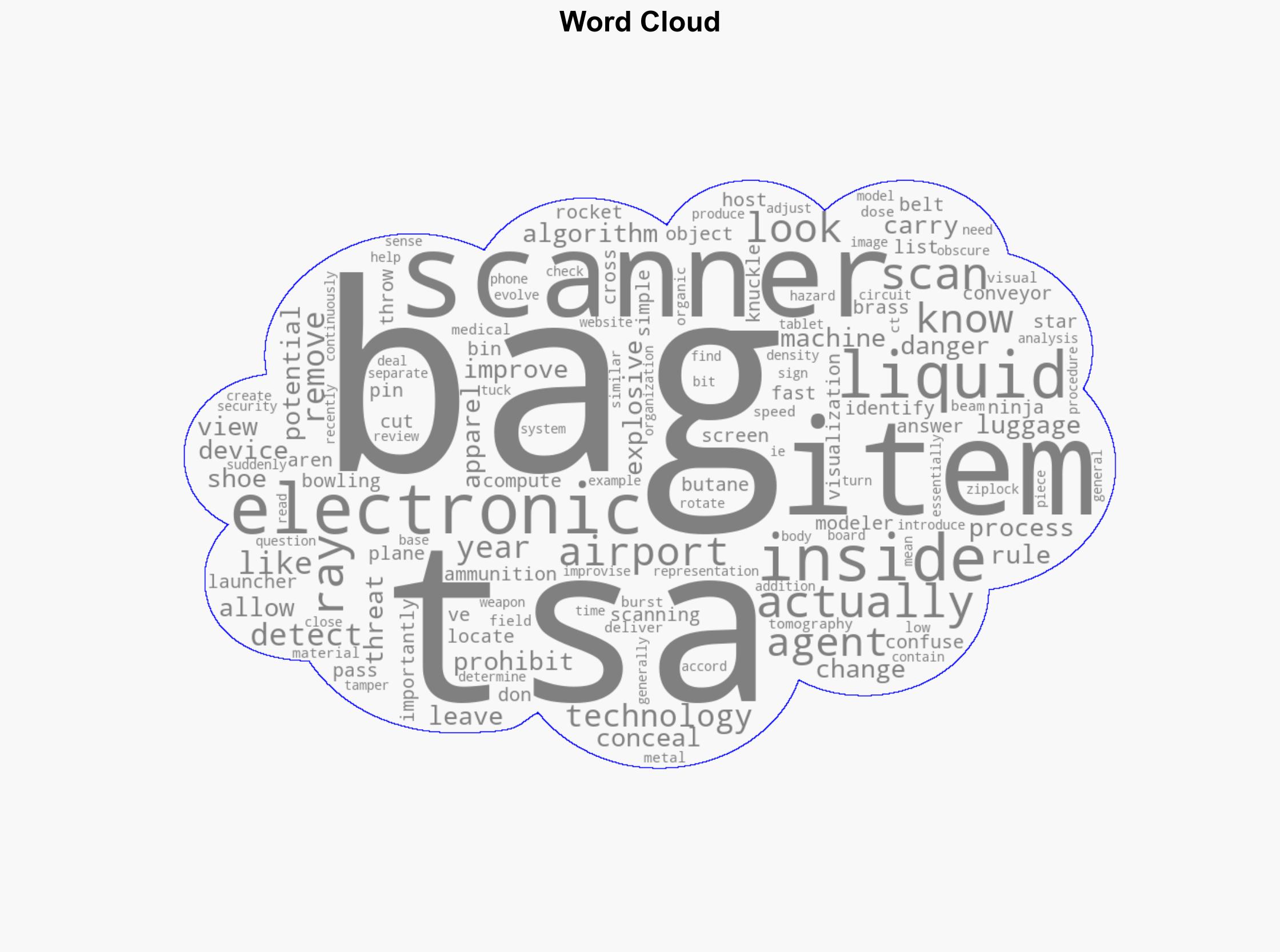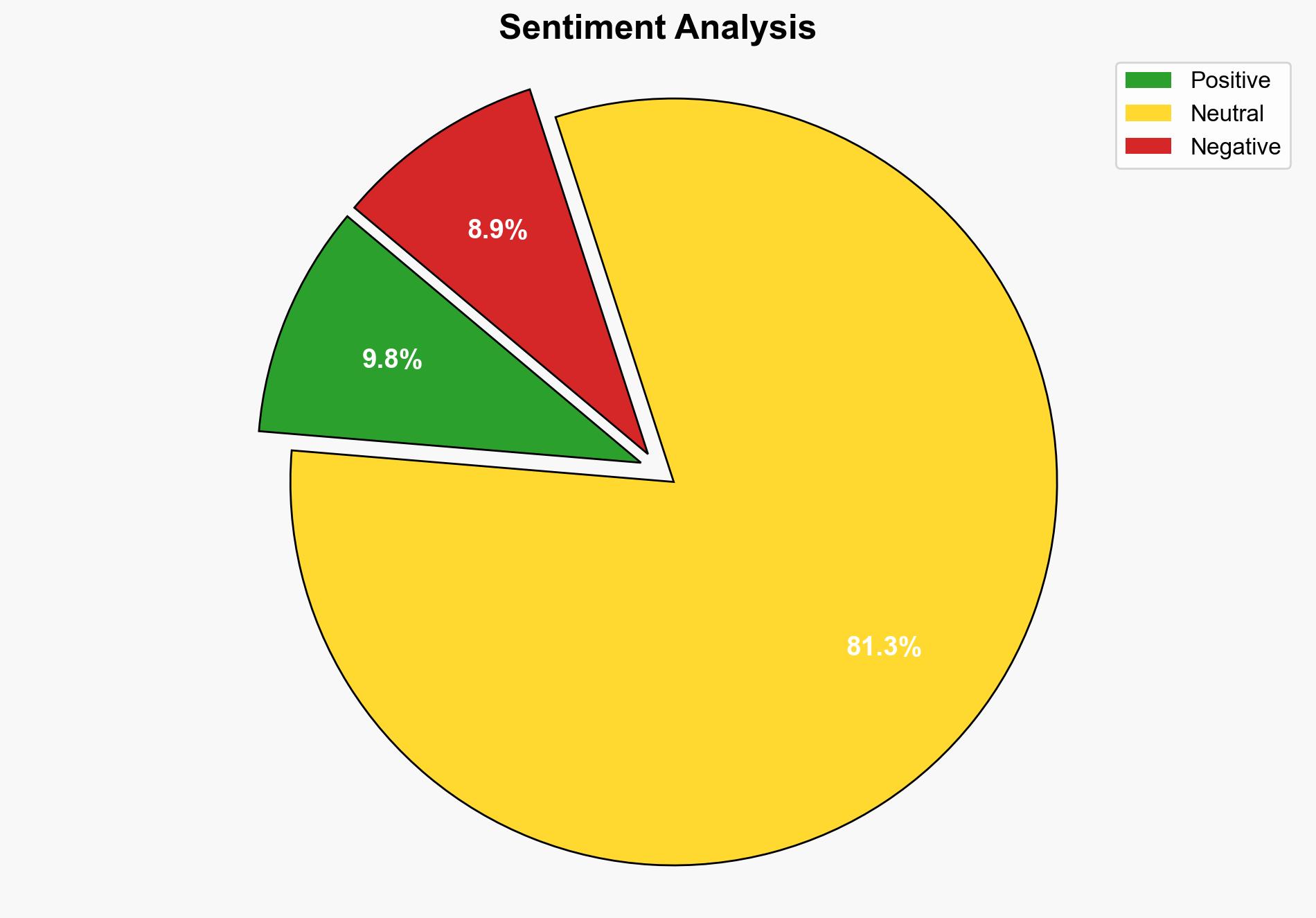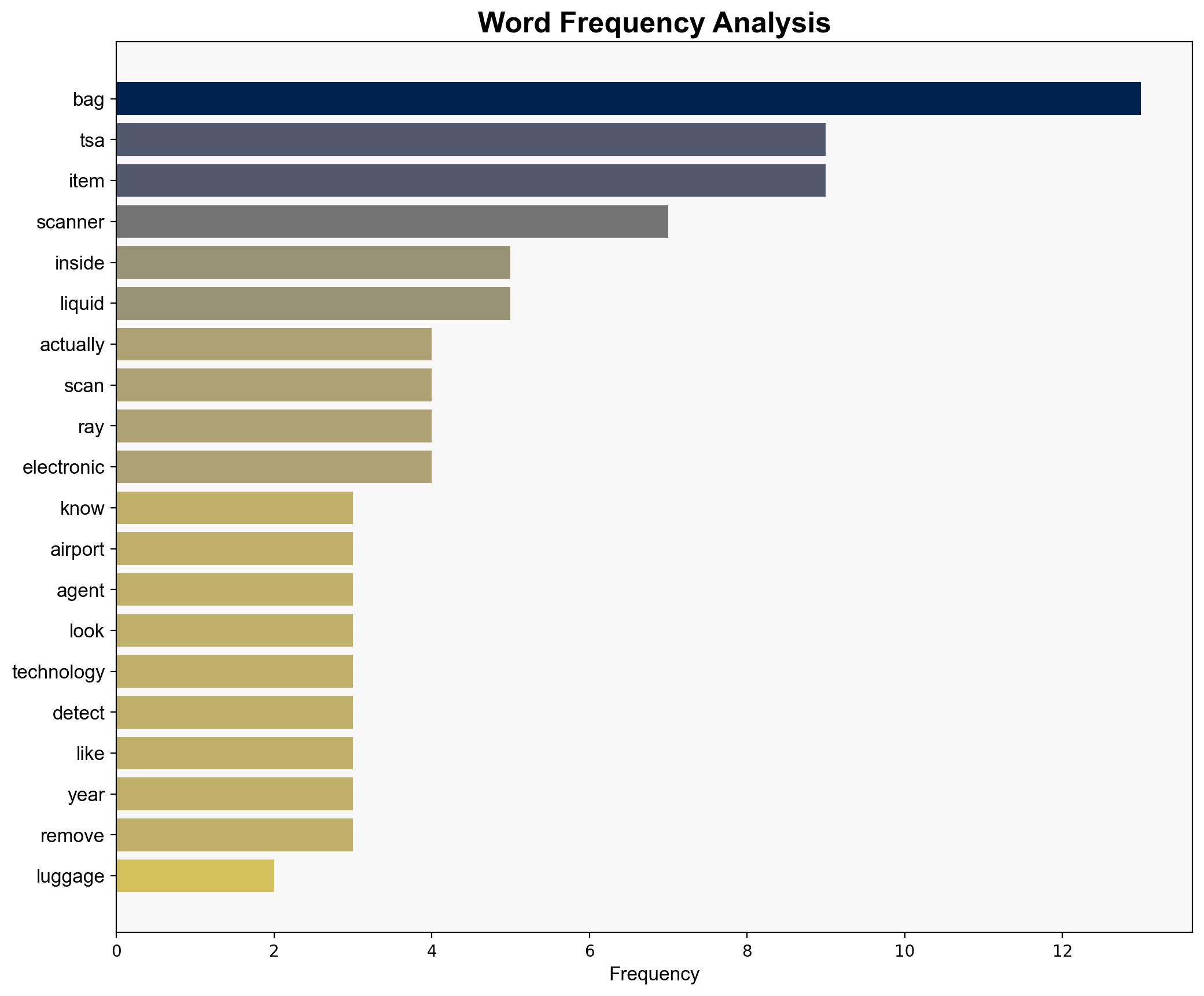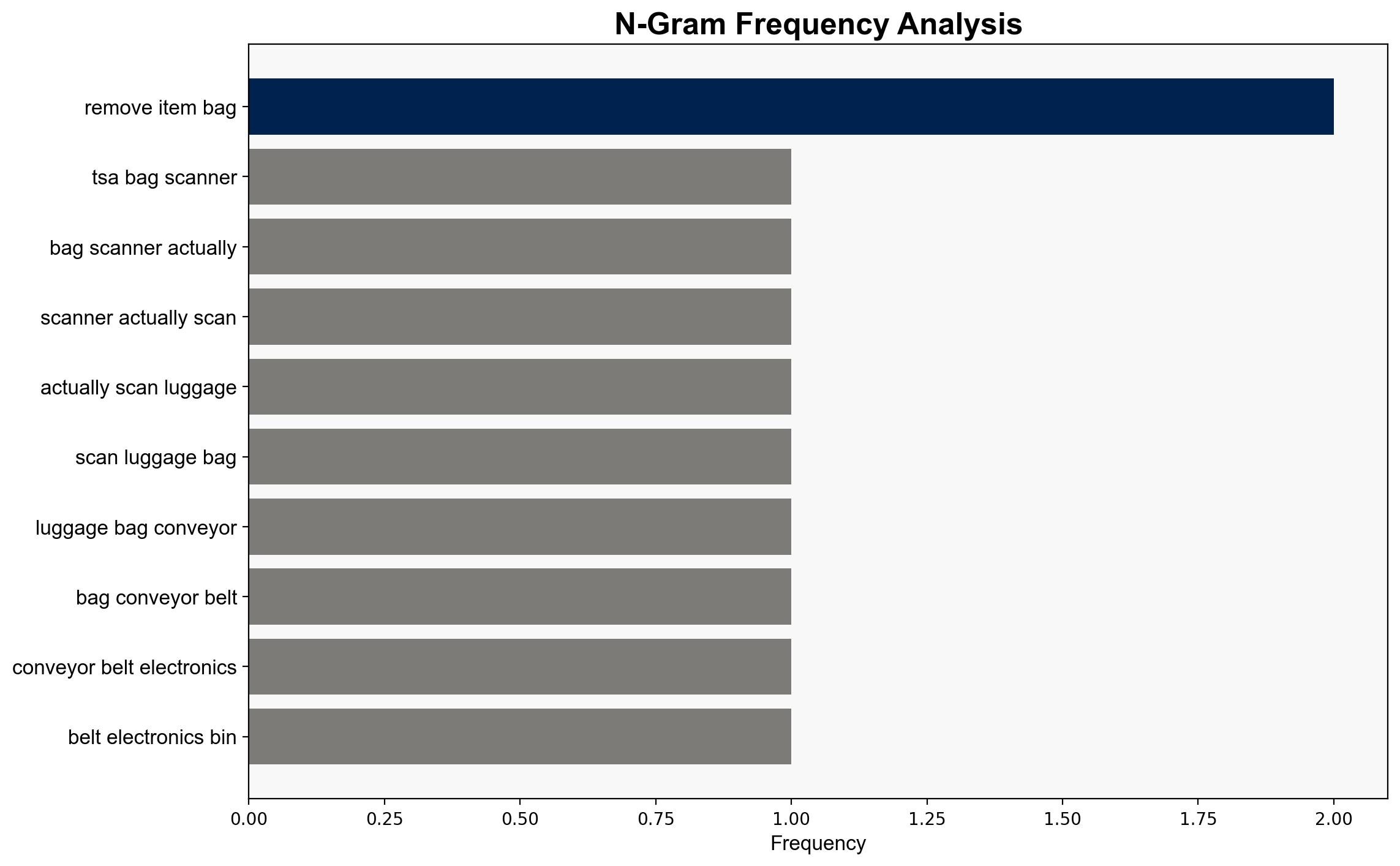What TSA’s Bag Scanners Actually See When They Scan Your Luggage – BGR
Published on: 2025-10-25
Intelligence Report: What TSA’s Bag Scanners Actually See When They Scan Your Luggage – BGR
1. BLUF (Bottom Line Up Front)
The most supported hypothesis is that TSA’s bag scanning technology, particularly the use of computed tomography (CT), is primarily focused on enhancing security by accurately identifying prohibited items through advanced imaging techniques. Confidence Level: Moderate. Recommended action is to continue investing in and updating CT technology while ensuring transparency and public understanding to maintain trust and compliance.
2. Competing Hypotheses
1. **Hypothesis A**: TSA’s bag scanning technology is primarily designed to enhance security by accurately identifying prohibited items using advanced imaging techniques.
2. **Hypothesis B**: TSA’s bag scanning technology is primarily a tool for broader surveillance and data collection, with security as a secondary function.
Using Analysis of Competing Hypotheses (ACH), Hypothesis A is better supported due to the emphasis on CT technology’s ability to detect specific threats like explosives and weapons, as described in the source. Hypothesis B lacks direct evidence in the source text but remains plausible given broader surveillance trends.
3. Key Assumptions and Red Flags
– **Assumptions**: It is assumed that TSA’s primary goal is security enhancement. Another assumption is that the technology is used solely for detecting prohibited items.
– **Red Flags**: Lack of detailed information on data retention and use beyond immediate security purposes. Potential cognitive bias includes confirmation bias towards believing technology is solely for security.
4. Implications and Strategic Risks
– **Security Implications**: Enhanced detection capabilities can reduce the risk of prohibited items being smuggled onto planes, thereby improving passenger safety.
– **Privacy Risks**: Potential misuse of data collected during scans could lead to privacy concerns and public backlash.
– **Economic Implications**: Investments in advanced scanning technology could increase operational costs for airports, potentially affecting ticket prices.
5. Recommendations and Outlook
- Continue investing in CT technology to enhance detection capabilities.
- Implement clear policies on data usage and retention to address privacy concerns.
- Scenario Projections:
- Best Case: Improved security with public trust maintained through transparency.
- Worst Case: Public backlash due to perceived privacy violations, leading to reduced compliance and increased security risks.
- Most Likely: Gradual improvement in security with ongoing public scrutiny and demand for transparency.
6. Key Individuals and Entities
No specific individuals are mentioned in the source text. The Transportation Security Administration (TSA) is the primary entity involved.
7. Thematic Tags
national security threats, cybersecurity, counter-terrorism, regional focus




